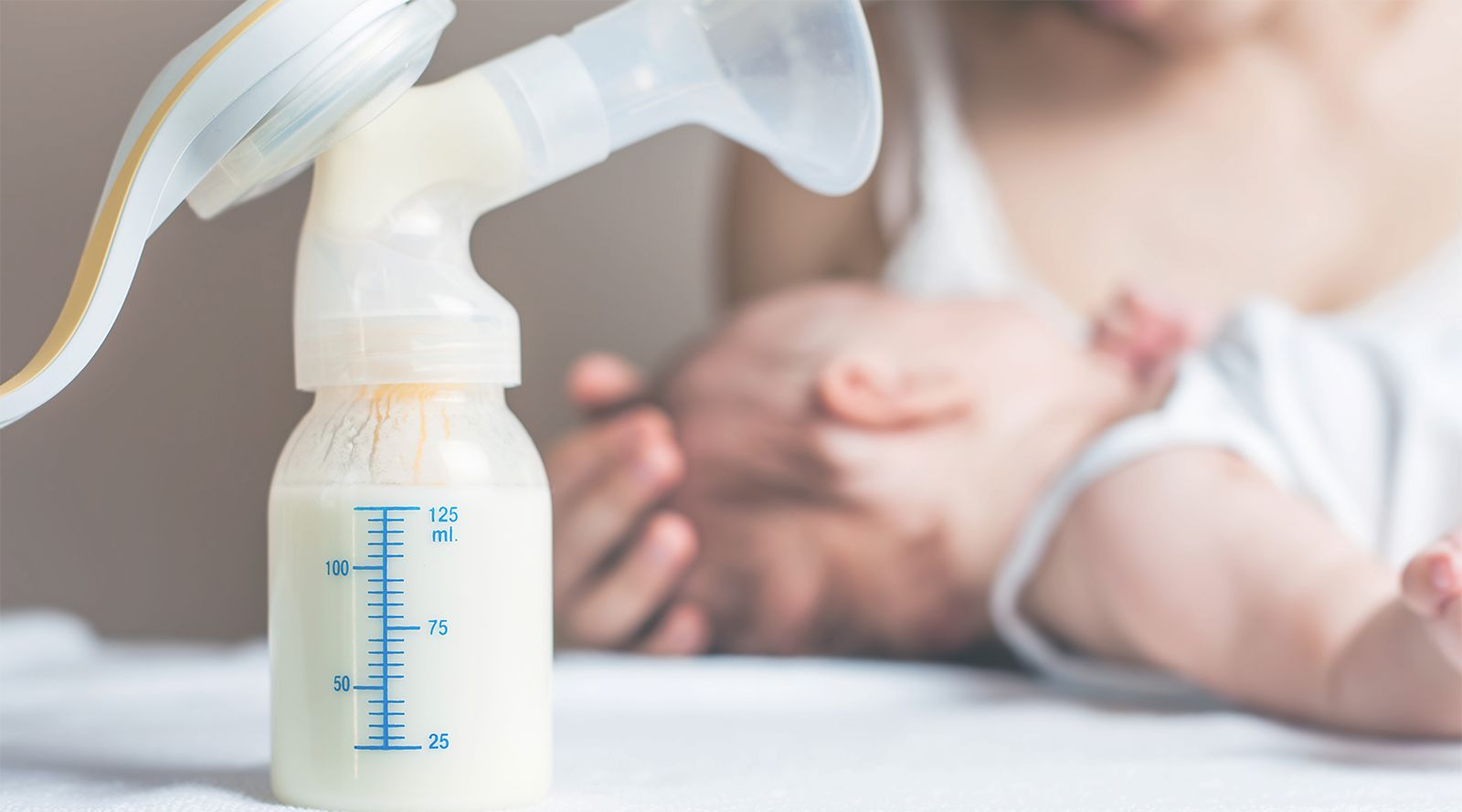Introduction
Breast milk is the best super food for babies and it’s one of the most wonderful things you can give them. Having the option to express breast milk can be a huge help when you can’t be there to breastfeed baby yourself. You might be apart from baby due to work, a partner might want to help with feeding, or maybe you just want a night out with friends. Whatever the reason, expressing means your baby still gets all the benefits of breast milk, even if you’re not around. It’s baby’s very own super-nutritious takeaway.
Expressing breast milk can also be helpful if you want to boost your milk supply. In fact, if you express breast milk to make extra in the early days, it can be easier to produce more milk later.
Expressing breast milk tips
Knowing when to express milk is key. If you don’t need to express breast milk from the beginning, it may be best to wait until breastfeeding is well established – the NHS recommends waiting until you and baby both feel happy with it.
You can express breast milk by:
- Using your hand
- Using a manual express pump
- Using an electric express pump
Whether you’re hand expressing breast milk or using a pump, always wash your hands before you start and sterilise any equipment.
It’s helpful to get in the right mood too: the more relaxed you are, the easier breastfeeding will be. Morning can be a good time as your breasts are often at their fullest, but this varies depending on mum. If you can try and express during the night, between 2am and 4am, as this is when your body releases the hormone prolactin, which makes your milk.
When you’re feeling happy and relaxed the hormone oxytocin starts flowing in your body which causes your breast milk to be released or, ‘let down’. A warm shower before breastfeeding will help milk flow by increasing the blood supply to your breast. To stimulate your hormones into starting their work try holding your baby or sitting near them. Even just looking at their picture or holding and smelling their clothes can help get things going. One more thing, have a drink to hand because baby won’t be the only one who’ll get thirsty.
Hand expressing breast milk
You’ll need a wide-mouthed container, such as a jug, to collect your breast milk in. Make sure it’s cleaned and scalded with boiling water or sterilised. You’ll also need some sterile bags, bottles or lidded containers for storing breast milk.
Hand expressing breast milk does take a bit of getting used to, and you may need to practise for a while. These tips might help:
-
Make sure your hands are clean and you’re feeling comfortable and relaxed.
-
Cup your breast with one hand. With your other hand, make a “C” shape with your fingers and thumb.
-
Gently massage or squeeze this area between your thumb and forefinger around your nipple. But not the nipple itself.
-
Release the pressure and then repeat until you get a good rhythm going but don’t slide your finger over the skin.
-
As the milk flows, express it into a bottle or breast milk freezer bag or any sterilised container.
-
If your milk doesn’t flow, try moving your finger and thumb closer to the nipple or further away until it does.
-
Practice makes perfect. If you ever need help, contact your midwife or breastfeeding adviser
Using a breast milk pump to express
Some mums find it easier to use an express pump. Whether you use a manual or an electric express pump will depend on what you’re comfortable with, how often you need to express breast milk, and how much milk you need to produce. You can also find an electric express pump that allows you to express both breasts at the same time.
Most express pumps work in a similar way. You put a suction cup and funnel attachment over your nipple and areola. This mimics how your baby suckles and stimulates your milk flow. If you’re using a manual express pump, you repeatedly squeeze a handle to create the pumping action. With an electric express pump, the machine does the squeezing for you.
If you only need to express the odd feed, expressing milk by hand or using a cheaper manual express pump may work best. If you’ll be pumping regularly at home or work, a standard electric express pump might be a better bet.
If you need to produce lots of milk because your baby can’t feed from your breast, there are hospital-grade double electric express pumps which you can hire for use at home.
How to express breast milk?
-
Sit comfortably, with your back straight.
-
Support your breast from underneath. Place your fingers flat on your ribs, with your first finger between your breast and ribs.
-
Ease your nipple into the funnel, making sure it’s in the centre. The funnel needs to be the right size: too big and it can make your nipples sore, too small and it can block your milk flow.
-
The funnel needs to be flush against your skin to maintain a seal but don’t force this.
-
Be patient. It often takes a minute or two for your milk to flow well.
-
It can take 15 – 45 minutes to pump both your breasts. The main thing is to pump for as long as your milk is flowing well.
-
Change breasts when the flow slows down. Keep changing between breasts because even if you’re only getting a small amount out, it all adds up.
-
Some electric express pumps have adjustable levels of suction. Start low and build up slowly. Starting high can be painful and may damage your nipples.
-
Expressing breast milk shouldn’t be painful, but if you’re experiencing any pain, or you’re finding it difficult, speak to your midwife.
How long can you store breast milk?
Here are some basic guidelines for storing breast milk:
-
At 4°C or under, you can keep it in the fridge for up to five days. Just make sure to put the date on the container.
-
You can store it in the freezer box for up to two weeks.
-
At -18°C or lower, you can keep frozen breast milk for up to six months.
How to defrost breast milk?
-
Thaw the frozen breast milk in the fridge and use within 12 hours of thawing.
-
To speed things up, stand the container in tepid water and use the milk immediately after thawing.
-
Make sure it is completely thawed and check the temperature before feeding.
-
Don’t microwave your breast milk: it can cause hot spots that could scald your baby’s mouth.
-
To reheat expressed milk, stand a bottle in warm water until the milk reaches the desired temperature.
-
Never refreeze breast milk, throw away any leftovers
IMPORTANT NOTICE: We believe that breastfeeding is the ideal nutritional start for babies and we fully support the World Health Organization’s recommendation of exclusive breastfeeding for the first six months of life followed by the introduction of adequate nutritious complementary foods along with continued breastfeeding up to two years of age. We also recognise that breastfeeding is not always an option for parents. We recommend that you speak to your healthcare professional about how to feed your baby and seek advice on when to introduce complementary feeding. If you choose not to breastfeed, please remember that such a decision can be difficult to reverse and has social and financial implications. Introducing partial bottle-feeding will reduce the supply of breast milk. Infant formula should always be prepared, used and stored as instructed on the label in order to avoid risks to a baby’s health.










